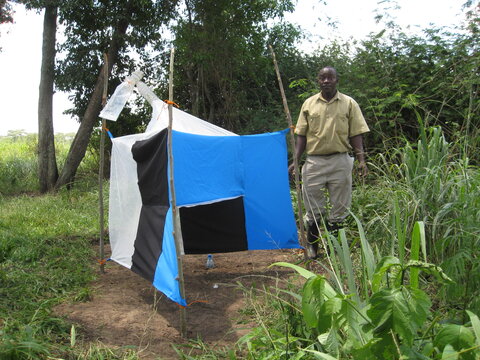Will everyone benefit equally from tsetse control?

There are likely to be substantial overall benefits from controlling tsetse in areas of high challenge and even in areas of lower challenge, but these will not be evenly distributed among all residents of the control area. Differences of gender and age may affect the distribution of benefits within households, and there will be differences between households in their cattle wealth and their proximity to uncontrolled areas.
Household level
Within households that own cattle, men, women and children will have different access to the benefits of keeping cattle, and also different responsibilities. There may be circumstances in which successful tsetse control increases women’s labour, for example if new opportunities to use draught oxen for ploughing (a male role) produce new needs for hand-weeding and harvesting (a female role). An increased ability to plough may also affect the balance between cash crops and food crops grown by the household, with effects on child nutrition. Each will depend on the division of labour, and the entitlement to income, within the community. However, these potential negative impacts must be seen firmly in the context of the benefits to the whole household if livestock productivity is increased.
Community level
In all cattle-keeping societies, ownership of cattle is unequal, with a minority owning large herds and others owning much smaller herds. In some societies traditionally considered “cattle-keeping”, a large proportion, even a majority of households may own no cattle, perhaps as a result of recurrent drought. So it is unlikely that the direct benefits of tsetse control will be equally distributed.
Where the community is culturally and/or ethnically homogeneous, there may be indirect ways in which poorer households can benefit from improved cattle survival and productivity among wealthier households. Many cattle-keeping societies have a wide range of customs by which wealthier households lend livestock to poorer households, who in some cases can keep some of the offspring, or employ poorer individuals as herders, with payment in cash or in livestock. In areas where use of draught animal power is common, there are likely to be customs such as draught-hire, draught sharing, or draught-for-labour exchanges. A general increase in the availability of healthy and productive livestock is likely to make it more likely that these customs will be put into practice. It may also have other multiplier effects on those involved in trade, hired labour and services.
However, if cattle ownership is linked to ethnic or cultural differentiation, then tsetse control can lead to tensions between communities that traditionally own cattle and those that do not, especially if it leads to an influx of cattle-owners from elsewhere (Salmon & Barrett, 1994).
Landscape level
Irrespective of the social factors above, people living near infested and uncontrolled areas of tsetse will benefit less from tsetse control than those living at the centre of an operational area. Those living on the very edge of an operational area will see little improvement in the incidence of disease, and may resent having to contribute to the control programme. Those at the centre, and hence furthest from the infested areas, will see a rapid improvement in animal health and productivity (which may in turn lead them to stop treating their cattle and/or contributing to the tsetse control operation).
Managing inequalities in benefits
These inequalities can be managed. The key to managing them is effective monitoring. This should cover both monitoring of physical measures such as amounts of pour-on distributed, physical states of targets and tsetse monitoring data, and qualitative or participatory monitoring of measures such as the satisfaction of cattle owners. The latter will need to make distinctions between different sorts of cattle-owners, cattle-owners and non-cattle-keeping households, and individuals within households.
Tsetse control projects, like any development projects, should be aware of the possibilities of exacerbating gender inequality and incorporate gender issues in their monitoring. Knowing from the outset the multiple uses and values of cattle within the household will assist these tasks. It is unlikely that inequalities within cattle-owning households will require modification of the design of the tsetse control programme itself, rather that they may require the implementing agency to liaise with others who can take complementary action (e.g. development of less labour-intensive weeding technologies) if necessary.
Inequalities of benefits between households based on their cattle-ownership can be partly or wholly managed within the tsetse control programme by managing the allocation of costs. With programmes based on the use of insecticide treated cattle this can be relatively easy: if everyone treats the same proportion of their cattle, benefits will be roughly proportionate to costs. If the programme is based on targets then a system of differential contribution (in cash or labour) to target maintenance may be needed. If there are significant inequalities of those at the centre and the periphery of the control area, these may need more serious management, e.g. by supplementing insecticide-treated cattle with targets maintained at collective expense on the periphery.